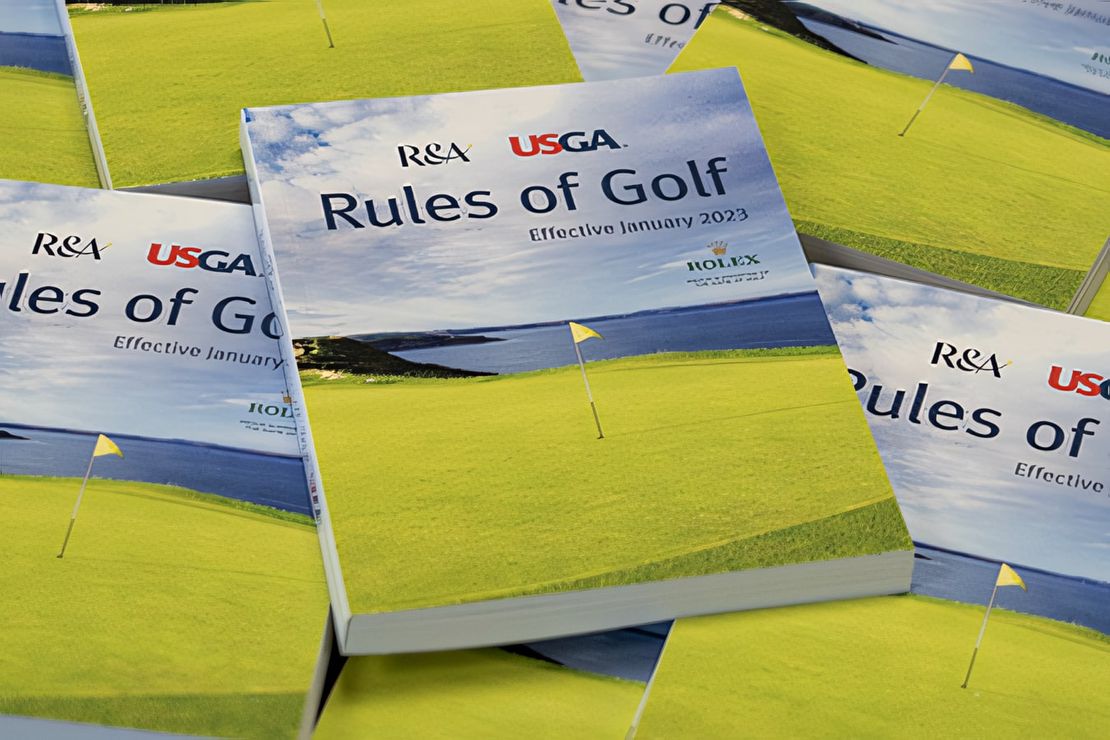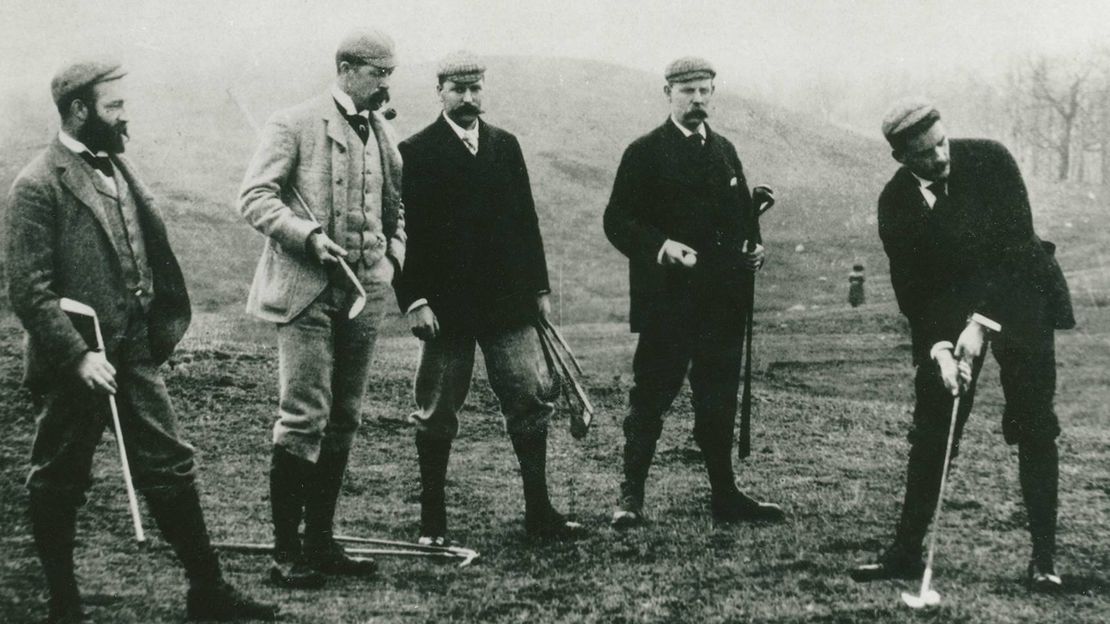
Current European vs. American Golf Rules: Key Differences and Implications
- John Whitaker
- Golf , General
- June 12, 2024
Table of Contents
Golf, a sport cherished for its deep traditions and nuanced play, is governed by a complex set of rules that vary subtly yet significantly across the globe. The differences between European and American golf rules reflect the unique characteristics of each region’s approach to the sport and embody the cultural and regulatory philosophies that influence them. In this article, “Current European vs. American Golf Rules: Key Differences and Implications,” we delve into the distinctions that define how the game is played on both sides of the Atlantic.
From the collaborative yet independent rule-making efforts of the Royal & Ancient (R&A) in Europe and the United States Golf Association (USGA) in America to the adaptation of modern technologies and equipment, these variations offer a fascinating glimpse into the world of international golf governance. As we explore these differences, we’ll see how they impact everything from casual play on local courses to the strategic execution of the game in professional tours.
Join us as we unravel the tapestry of regulations that guide the game of golf, enhancing our appreciation for its global diversity and the challenges faced by players who compete across continents.
The Role of Governing Bodies
R&A and USGA: Different Stewards, Common Goals
Two predominant bodies have shaped the governance of golf rules: the Royal & Ancient (R&A) in Europe and the United States Golf Association (USGA) in America. Both organizations serve as the stewards of golf rules, but their approaches reflect their regions’ distinct cultural and historical contexts.
Europe - The Royal & Ancient (R&A)
Based in St Andrews, Scotland, the R&A originates from the very cradle of golf. It is tasked with overseeing the rules of golf worldwide, excluding the United States and Mexico. R&A’s approach to rule governance is deeply rooted in tradition, emphasizing preserving the game’s integrity and the spirit of its centuries-old practices. Their method is often characterized by careful consideration and gradual implementation of rule changes, aiming to respect the game’s heritage while ensuring it remains relevant and fair.
America - The United States Golf Association (USGA)
The USGA, headquartered in Liberty Corner, New Jersey, governs the rules of golf in the United States and Mexico. It is known for its more dynamic approach to rule changes, often driven by technological innovation and evolving player demographics. The USGA frequently updates its rules to accommodate new technology and to make the game more accessible and enjoyable for a diverse and changing population of players.
Collaborative Efforts
Despite their geographical and philosophical differences, the R&A and USGA have collaborated to synchronize golf rules worldwide. This partnership is highlighted by their joint publication of the Rules of Golf, which aims to ensure that the game is played under a single set of rules globally. This collaboration is crucial during major revisions, such as the significant overhaul of the rules in 2019, which aimed to simplify many aspects of the game for players at all levels.
This collaborative yet independent-minded approach helps balance respecting the sport’s rich traditions and adapting to its modern needs. As golf continues to grow globally, the interplay between these governing bodies ensures that the rules evolve to respect diverse playing styles and cultural preferences.
Author’s Perspective
As a retired golf coach who has observed the evolution of these governing bodies over decades, I’ve come to appreciate the balance they strive to maintain between tradition and innovation. The R&A’s commitment to the game’s heritage provides a grounding influence, while the USGA’s adaptive approach ensures that golf remains relevant in a rapidly changing world. This duality is not just necessary; it is vital for the sport’s continued growth and accessibility. Witnessing their collaborative efforts firsthand has reinforced my belief that the true spirit of golf lies in respecting its past while eagerly embracing the future.
Modern Rule Changes
2017/2019 Overhaul: Simplifying the Game
The most recent major revision to the golf rules came in 2019, following a comprehensive review process that began in 2017. This overhaul was significant in the scope of the changes and in the collaborative effort between the R&A and USGA to simplify the rules and make the game more accessible and faster-paced, particularly for new players.
Key Changes and Their Impacts
Several changes were particularly noteworthy:
- The time allowed to search for a lost ball was reduced from five minutes to three, speeding up play and reducing delays.
- Penalties for accidentally moving a ball on the green or when searching for a ball were removed, helping to reduce players’ stress and complexity.
- The procedure for dropping a ball back in play was simplified. It now requires the ball to be dropped from knee height rather than shoulder height, making it easier and more consistent.
- New permissions were introduced, allowing players to repair spike marks and other damage on the putting green and to putt it with the flagstick in the hole, which can speed up play.
Regional Reactions
In Europe, where tradition profoundly influences the game, some changes, especially those related to putting green and flagstick, received mixed reactions. Traditionalists viewed them as a departure from the skills historically valued in the game.
In contrast, the American response was generally positive, with players and officials appreciating the efforts to speed up the game and make it more beginner-friendly. The changes aligned well with the USGA’s mission to make golf more modern and accessible.
Equipment and Technology
Adapting to Technological Advances
As golf technology has evolved, so have the rules governing equipment standards. The R&A and USGA have been proactive in addressing the implications of technological advances for the fairness and integrity of the game.
Equipment Regulations:
- The authorities have set strict guidelines on the characteristics of golf clubs and balls. Limitations include restrictions on the size and shape of clubheads, the length of clubs, and the speed at which a ball can come off the clubface. These standards ensure that no player gains an unfair advantage purely through equipment.
- In recent years, a particular focus has been on the technological enhancements in golf balls that could alter the game’s traditional challenges. The governing bodies have responded with specifications that limit ball flight distance and behaviour to preserve course relevance and challenge.
Technology in Golf:
- One of the more significant technological introductions has been the allowance of distance-measuring devices (DMDs) during play. These tools, including laser rangefinders and GPS-enabled devices, help players measure distance more accurately, influencing club selection and strategy.
- Advanced systems that track player performance and provide real-time data analytics are becoming increasingly common. The rules accommodate these technologies by defining specific conditions under which they can be used during competitive play.

Cultural Responses to Technology
In Europe, there tends to be a cautious approach to technology, emphasising maintaining traditional playing experiences. While technology is accepted, there’s often debate about its role and how much it should influence the game.
The American market is generally more receptive to adopting new golf technologies. There’s tremendous enthusiasm for how technology can enhance play and player development, reflecting a broader cultural acceptance of technological innovation in sports.
European Tour vs. PGA Tour: Rule Differences and Their Impact
The nuances in the rules between the European Tour and the PGA Tour showcase how regional variations can subtly but significantly influence professional play. While the overarching rules of golf set by the R&A and USGA are universally followed, local adaptations and tournament-specific rules affect the game’s dynamics.
In the European Tour, courses often face variable weather and terrain, leading to the adoption of local rules tailored to challenges like wind and rain or unique course features. These rules accommodate the distinct environmental conditions typical of European locales. In contrast, PGA Tour events, primarily held in the United States, might introduce rules that tackle issues more prevalent in American climates and course designs, such as different grass types and seasonal weather variations.
The pace of play is another area where the tours diverge. The PGA Tour has implemented strict pace-of-play policies to make the game faster and more viewer-friendly, reflecting the broader American sports culture that prioritizes efficiency. The European Tour, while also addressing the pace of play, tends to allow more leeway, given the diverse environments and conditions at its various stops.
Tournament-specific rules also vary, with certain European Tour events experimenting with modifications to penalties for ‘out of bounds’ situations that differ from the usual PGA Tour practices. These adjustments are designed to enhance competition or maintain the pace of play, adapting to each course’s specific layout and historical scoring trends. Additionally, the strategic placement of drop zones and relief areas can differ significantly between the tours, influenced by each tour’s philosophy on course design and rule enforcement.
These variations require players to adjust their strategies and affect how they prepare for tournaments. Golfers who compete internationally must navigate these differences to ensure adequate performance across both tours.
Local Rules and Course-Specific Guidelines
The local rules of golf courses capture the essence of the sport’s adaptability to each location’s unique characteristics. While the global rules provide a framework, the local nuances tailor the game to specific environmental, cultural, and strategic challenges.
Europe’s Local Variance
European golf courses, with their rich history and diverse landscapes, offer a unique set of challenges that are reflected in their local rules. For instance, in coastal links courses, local rules might address the specific ways balls interact with naturally occurring obstacles like gorse bushes or stone walls. These rules are not merely adjustments to the game; they are integral to maintaining the traditional character and challenge of each course. The local rules in Europe tend to embrace the natural and historical aspects of their settings, adding layers of complexity and charm that require golfers to be particularly adept and respectful of the sport’s heritage.
America’s Approach to Standardization
In contrast, American golf courses typically follow more standardized local rules. This approach reflects the country’s preference for uniformity and fairness in sporting competitions. American courses might introduce specific local regulations that focus on improving the pace of play or managing course maintenance challenges, such as redefining boundary lines or specifying drop zones. The goal is often to ensure consistency and fairness for all players, regardless of the course.
The Role of Local Rules in Competition
Local rules are not just minor footnotes but are critical in shaping how tournaments are conducted. They can influence the outcome of a game by dictating strategies and preparation. For example, a local rule that allows for a preferred lie in certain conditions could significantly impact player decisions and tournament results. Golfers must always be aware of these rules, as they require adjustments in tactics and equipment, ensuring that the game remains dynamic and fair, irrespective of the location.
Understanding and respecting these local variations is crucial for any golfer, especially those who play internationally. These rules ensure that the game adapts to its surroundings while maintaining the integrity and fairness expected in professional sports.
Examples of Course-Specific Guidelines
St. Andrews Links (Scotland)
Known as the “Home of Golf,” St. Andrews often incorporates rules that address its unique double greens and shared fairways. One notable local rule permits the grounding of the club in a hazard, which is typically prohibited under standard golf rules. This adaptation acknowledges the sandy soil of the links, which can behave more like firm fairways than typical bunker conditions.
Pebble Beach Golf Links (USA)
At Pebble Beach, one local rule pertains to the iconic cliffs along the coastline. If a ball is lost or out of bounds due to the cliffs, a specific local rule allows for a more favourable drop zone. This helps manage play where winds can unpredictably affect the ball’s flight.
Valderrama Golf Club (Spain)
Valderrama’s tight, tree-lined fairways lead to frequent encounters with the “corke” oak trees. The course has a local rule regarding relief from interference by these protected species, which is stricter than the usual relief procedures found in other courses. This rule emphasizes the importance of preserving the natural environment while still offering fair play options.
Conclusion
The intricate variations in golf rules between Europe and America underscore a broader narrative about how the sport adapters and thrives under diverse cultural, environmental, and regulatory landscapes. While the basic rules of golf set by the R&A and USGA provide a universal foundation, the local adaptations and specific conditions of professional tours and courses highlight the sport’s dynamic and flexible nature.
Cultural Underpinnings
In Europe, preserving tradition in golf rules reflects a deep respect for the sport’s history and origins. This adherence to tradition enriches the player’s experience by connecting the modern game to its historical roots. Conversely, in America, the readiness to incorporate changes, whether in response to technological advances or player feedback, illustrates a culture that values innovation and pragmatism. This approach aims to make golf more accessible and enjoyable, catering to a broader demographic.
Implications for Players
For players, especially those who compete internationally, understanding these differences is crucial. It demands not only adaptability and strategic thinking, but also the ability to navigate the physical challenges of the course and the varied regulatory environments. The capacity to switch between different sets of rules and expectations can be as critical to a golfer’s success as their technical skills.
Future Outlook
As golf continues to evolve, the ongoing dialogue between the R&A and USGA, and the active input from the global golf community, will be vital in shaping the future of the sport. Balancing innovation with tradition, especially in a rapidly changing world, will continue to be a challenge. However, this balance is essential for maintaining the integrity and spirit of golf while ensuring it remains relevant and engaging for future generations.
Exploring these rule differences not only informs a deeper appreciation of the sport but also highlights the importance of global cooperation in maintaining the game’s universal appeal and integrity. As we look forward, understanding and respect for these differences will continue to unite golfers around the world, regardless of the ground under their feet.


